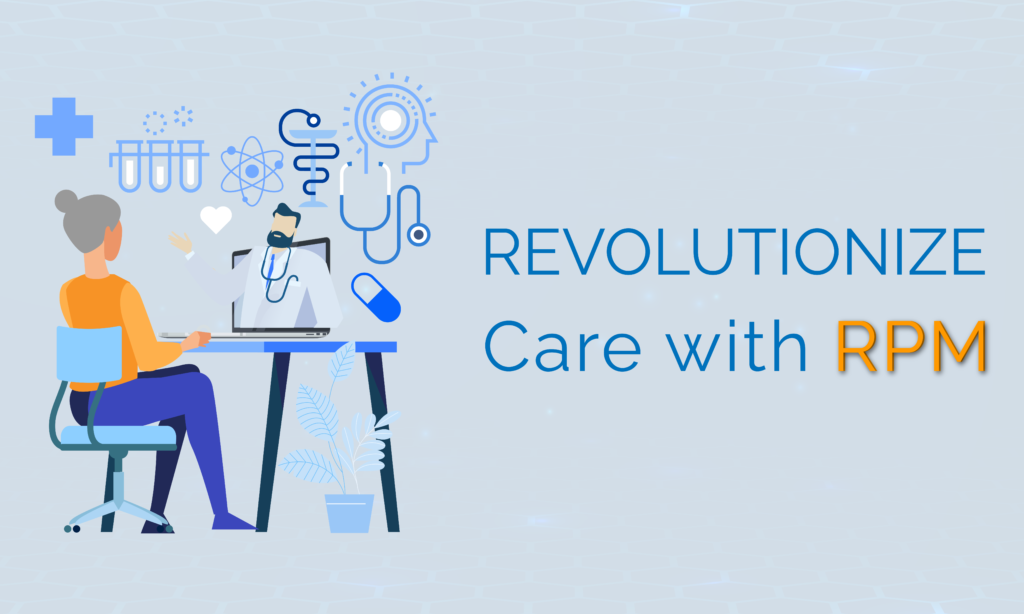Remote Patient Monitoring (RPM) has gained popularity as virtual care became the trend during the pandemic. From a very modest pre-pandemic beginning as a landline home telephonic care, RPM now uses the latest digital technology with cellular capabilities to capture real-time patient health data. Beyond COVID-19, RPM is poised to revolutionize care delivery because it is a solution that is accessible and readily available at any time and place. RPM is an innovative care delivery model that has saved countless lives. More importantly, it has greatly reduced costs for an overwhelmed healthcare system as it caters to the needs of the high-cost, high-risk chronic care population.
RPM Today
RPM makes access to care easy, convenient, cheaper, and timely. Providers can check on their patient’s health status through wearables and devices that are fully configured and equipped with wireless technology for automatic data transmission. Patients can receive the care they need right in the comfort of their homes without difficult commutes, long queues, and without wondering about the health conditions other others in the waiting room. Parents with small children do not need to drop off the kids at the daycare center or take a day off at work to keep their appointments.
RPM has paved the way for digital medicine and remote care. Its devices can be used to monitor weight, pulse, lung capacity, oxygen saturation blood, blood glucose, blood pressure, temperature, pain management, medication tracking, and more. It has now evolved to monitor those with additional chronic health conditions and is now the perfect complement to Chronic Care Management (CCM).
What RPM brings to the table
The digital innovations provided by RPM have been beneficial in many aspects:
1. Aiding clinical trials
RPM is able to capture more consistent data for trials to easily follow through. It can aid in the drug-development process especially when clinical trials are often plagued by recruitment problems. Moreover, RPM has been known to be more accurate, positively impacting the pharmaceutical industry.
2. Strengthens communication between physicians and their patients
Medication adherence is affected when physicians are not able to communicate with their patients in a way that is easily understood. Through the use of RPM technology, physicians can assess the patient’s health status and make the necessary adjustments to medications when needed. RPM with the aid of AI can decrease the chances of errors and bridge the gap between a doctor and a patient. Many providers are now using mobile-enabled RPM because it is more efficient and economical compared to traditional telephonic RPM. With the use of AI, patients are alerted when they fail to take their measurements. In addition, a complete RPM solution comes with a patient-friendly app, making patients feel closer to their providers whom they feel are within reach in just a few clicks.
Reduces costs for you and your patients
McKinsey & Co. also estimates that the present healthcare spending amounting to $250 billion can now be virtualized to make it more cost-efficient. One of the goals of RPM is to reduce hospital readmissions by preventing an escalation of the patient’s condition. Patients enrolled in an RPM program easily manage significant milestones when it comes to their health as shown in a 2019 study. Out of 2,004 American adults, 49% have reported positive health outcomes, and 42% claim ownership of their health. In the same study that included 100 physicians, 68% intend to utilize RPM in the future, and 50% believe that the technology has provided more access for patients.
Brings in deserved revenue
The Center for Medicare and Medicaid Services (CMS) has included RPM in its reimbursement policies, acknowledging the high interest and demand for it. CMS is enticing more providers to enable wider patient access to this innovative care.
RPM In the Future
Patients have altered their initial perception of pre-pandemic RPM which was tainted with distrust of tech devices and the use of patients’ personal data. Now, patients see its value with 57% of respondents agreeing to receive remote monitoring of their condition using at-home devices while 52% prefer virtual consultations for routine appointments.
A November 2020 report predicts that the RPM market is estimated to reach $117.1 billion in 2025 versus $23.2 billion last year. That’s a quintuple increase in five years which is a testament to its effectiveness. With increased demand and interest, RPM is sure to be elevated with AI and machine learning that can automate many of the repetitive tasks for clinicians so they can efficiently focus their attention on caring for patients.
The future of RPM is set when it comes to chronic disease monitoring. It can address the multiple chronic conditions of patients, allow for easy communication among different specialists, provide an inexpensive solution, and promote continuity of care. Through modern and sophisticated technology, RPM can be used to provide accurate, authentic, and full patient visibility, which would help chronic care patients get the care they need to lead a better quality of life.
Virtually enabled healthcare providers will become the norm in the future. Tech companies and product marketers will play crucial roles. The former will provide the proper tools for disease management and monitoring through biomarker-based and research-enhanced healthcare solutions. The latter will use their tools and capabilities to pursue an RPM-ready mindset by incorporating the human face into the patient’s digital experience.
The next big step is to make patients fully understand how they can benefit from RPM. Only then can they enjoy better health outcomes by claiming ownership of their care and having full confidence in the remote technologies and smart devices that capture their data and transmit them to clinicians using RPM solutions.
Ascent Care Partners (ACP) leverages RPM technologies to provide care to patients with chronic conditions. Along with our RPM technology, AI, and smart devices, our turnkey RPM solution also provides you with a clinical team of highly trained nurse practitioners as care coaches who are adept at engaging patients and genuinely building a relationship with them. RPM and CCM are our core services that can help your practice innovate your remote care while bringing in deserved income to help you grow financially.



